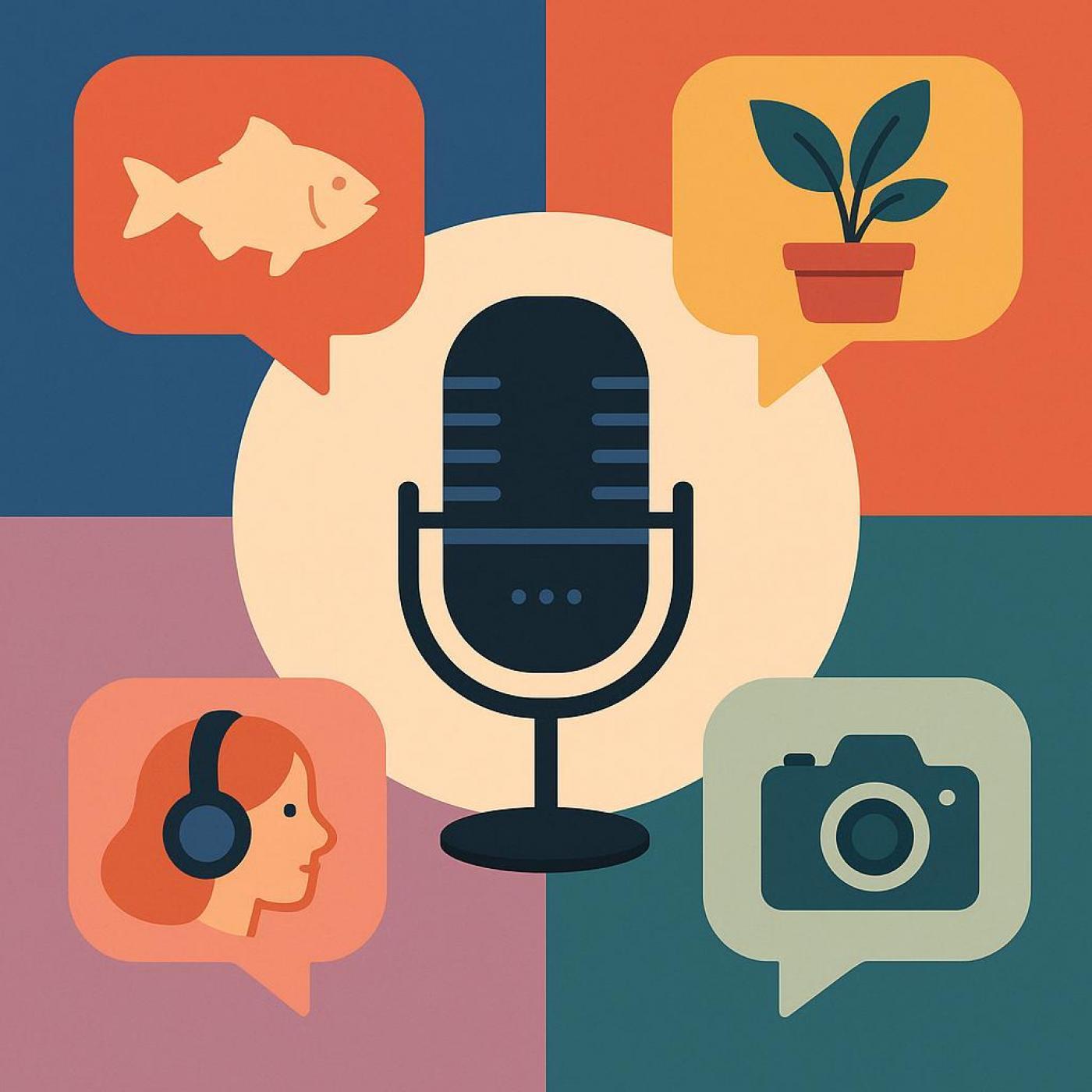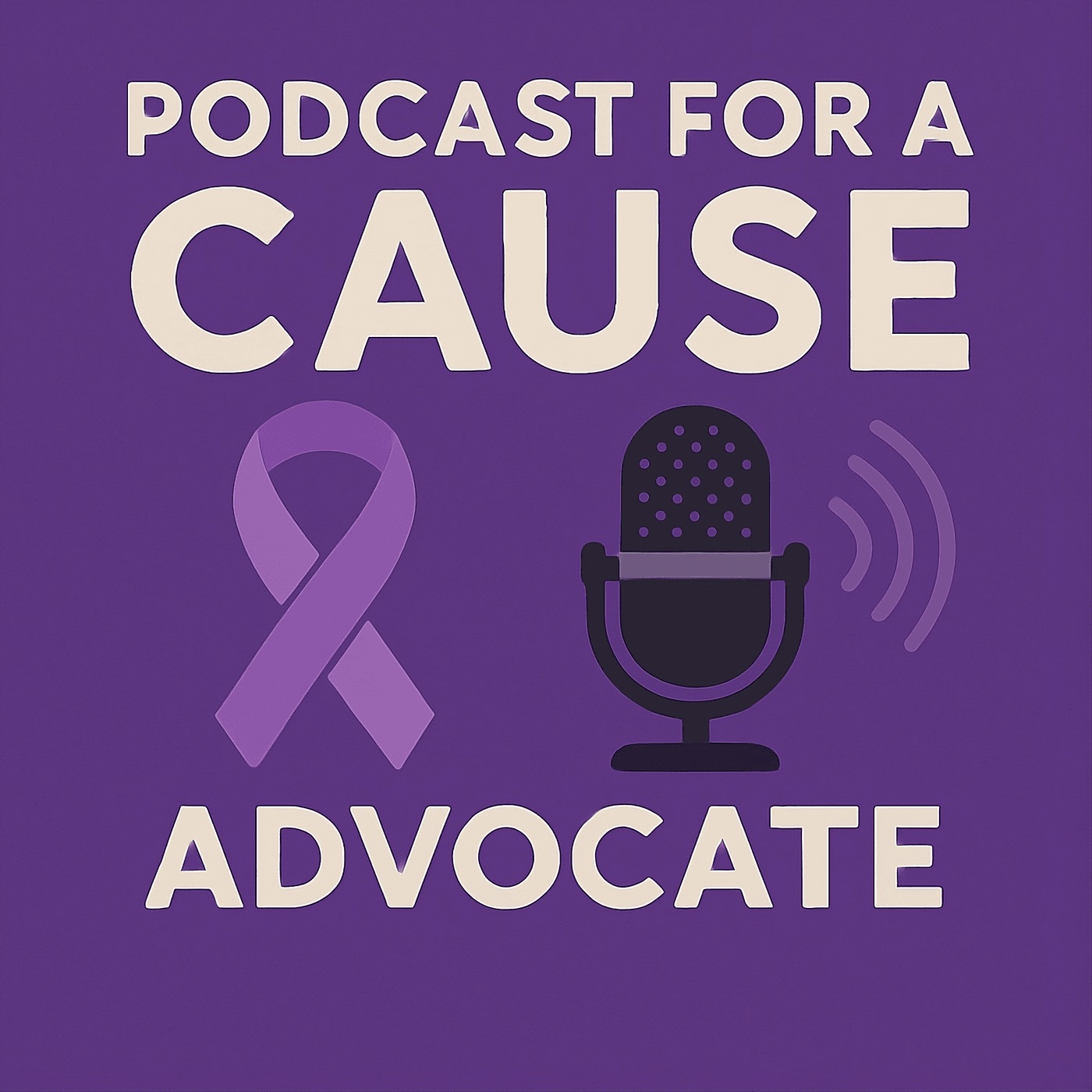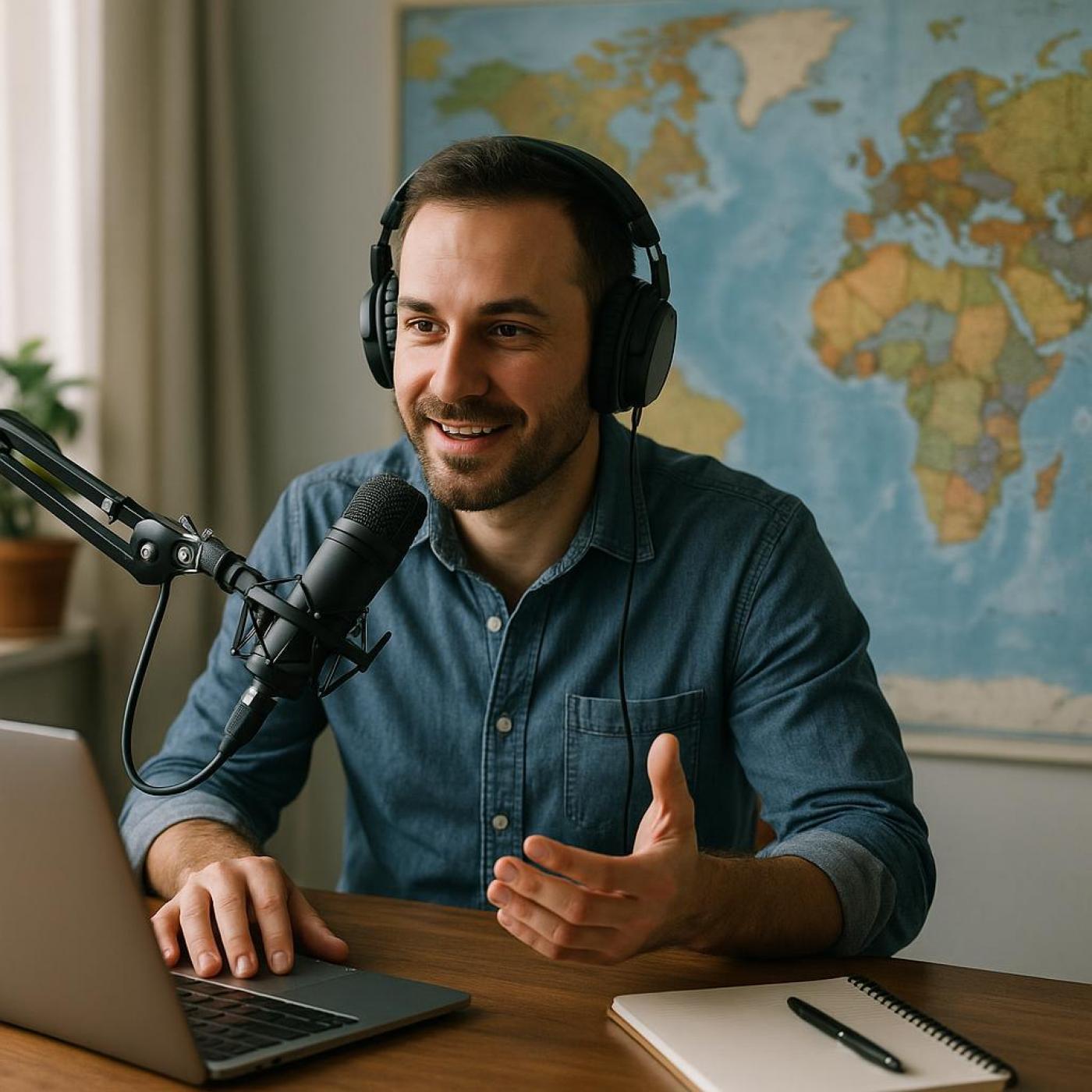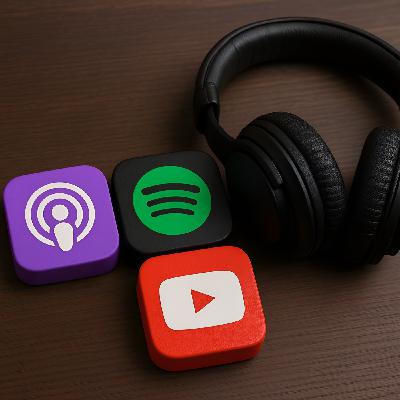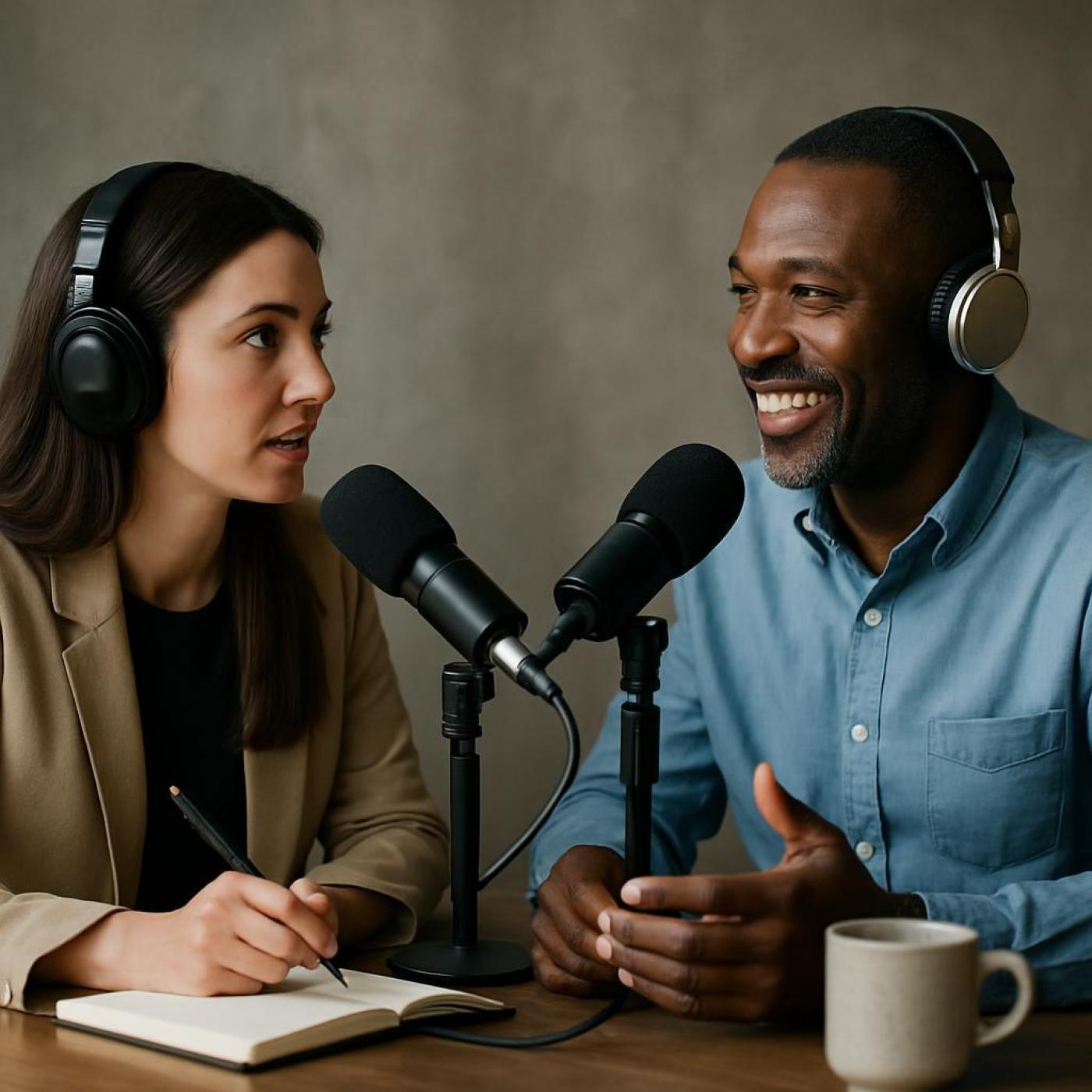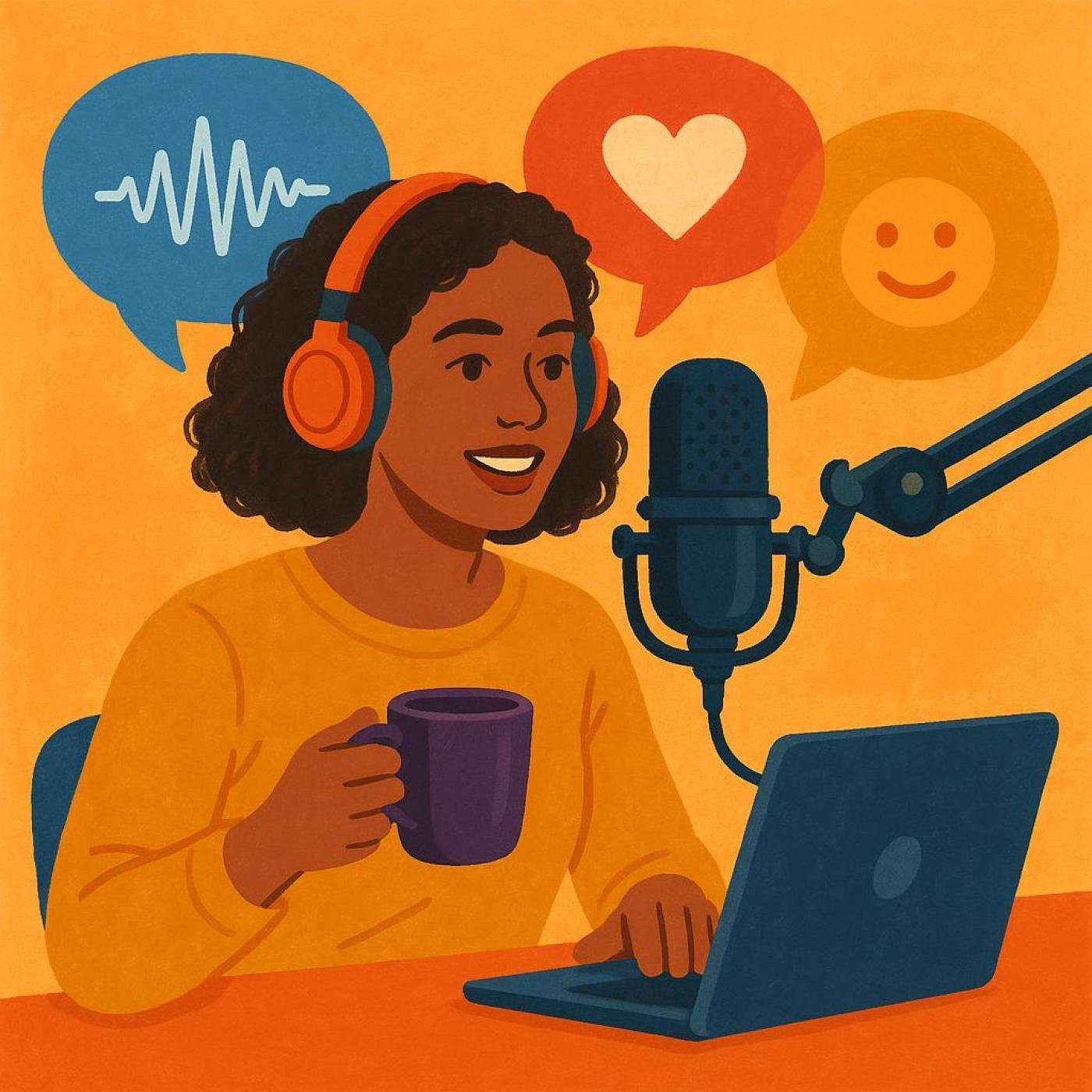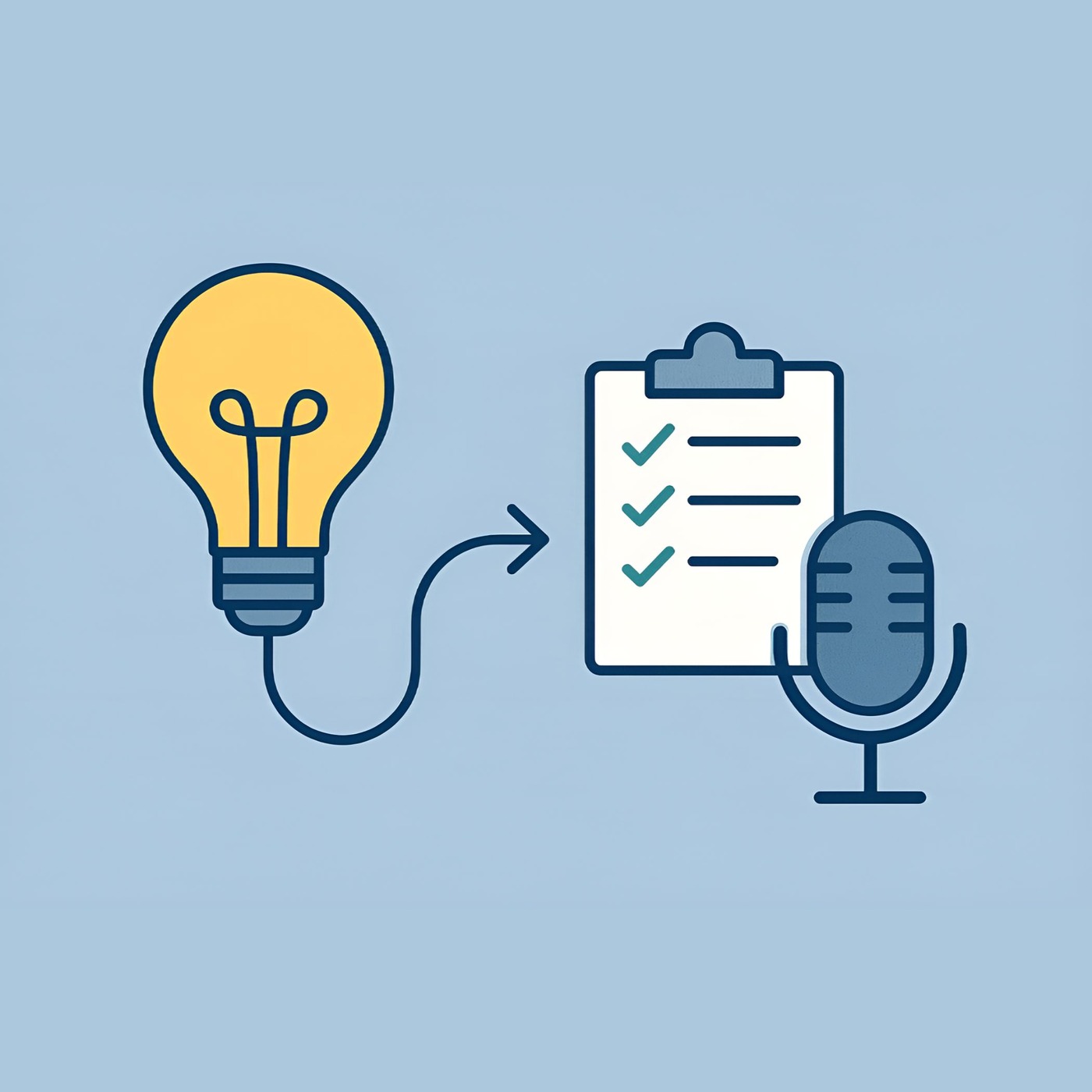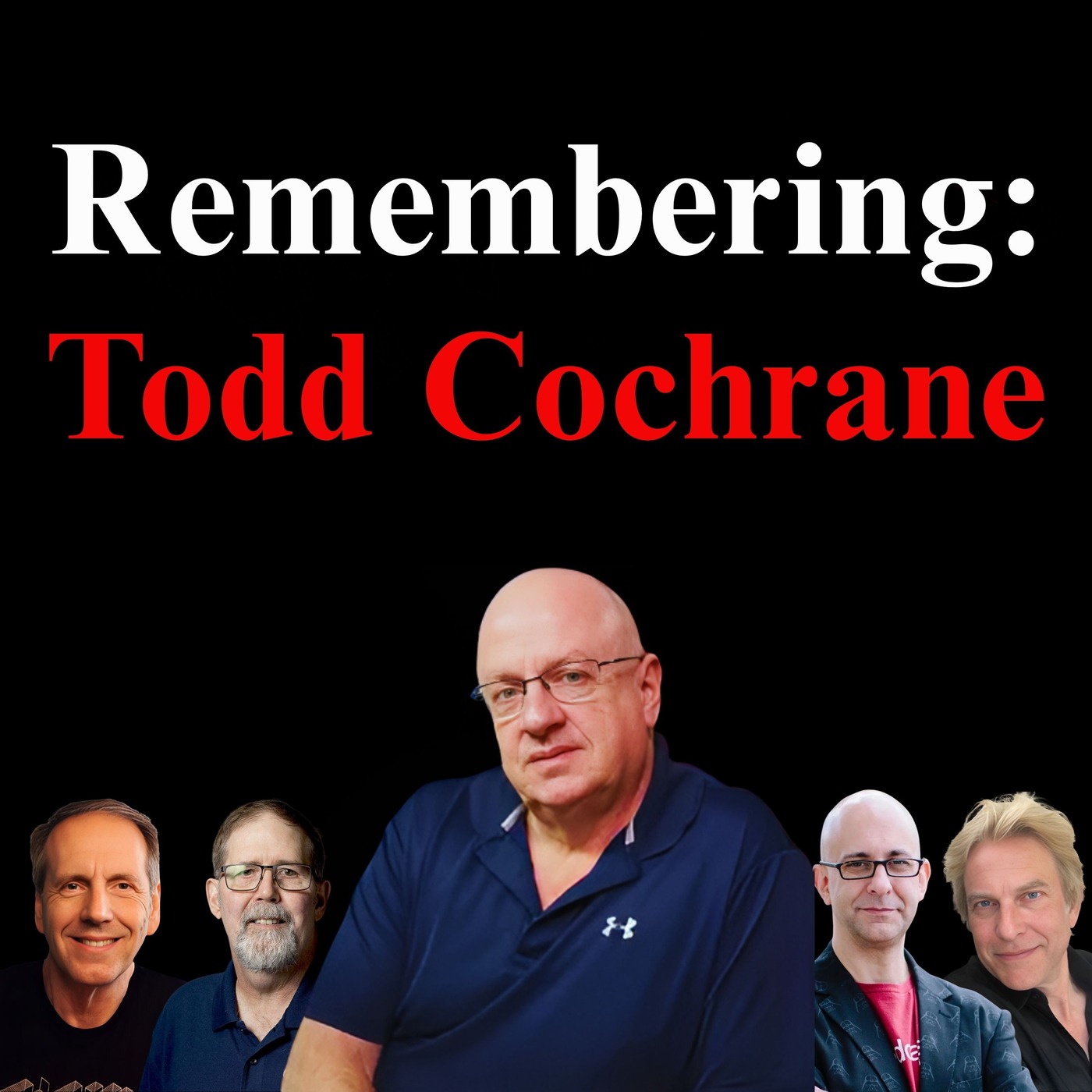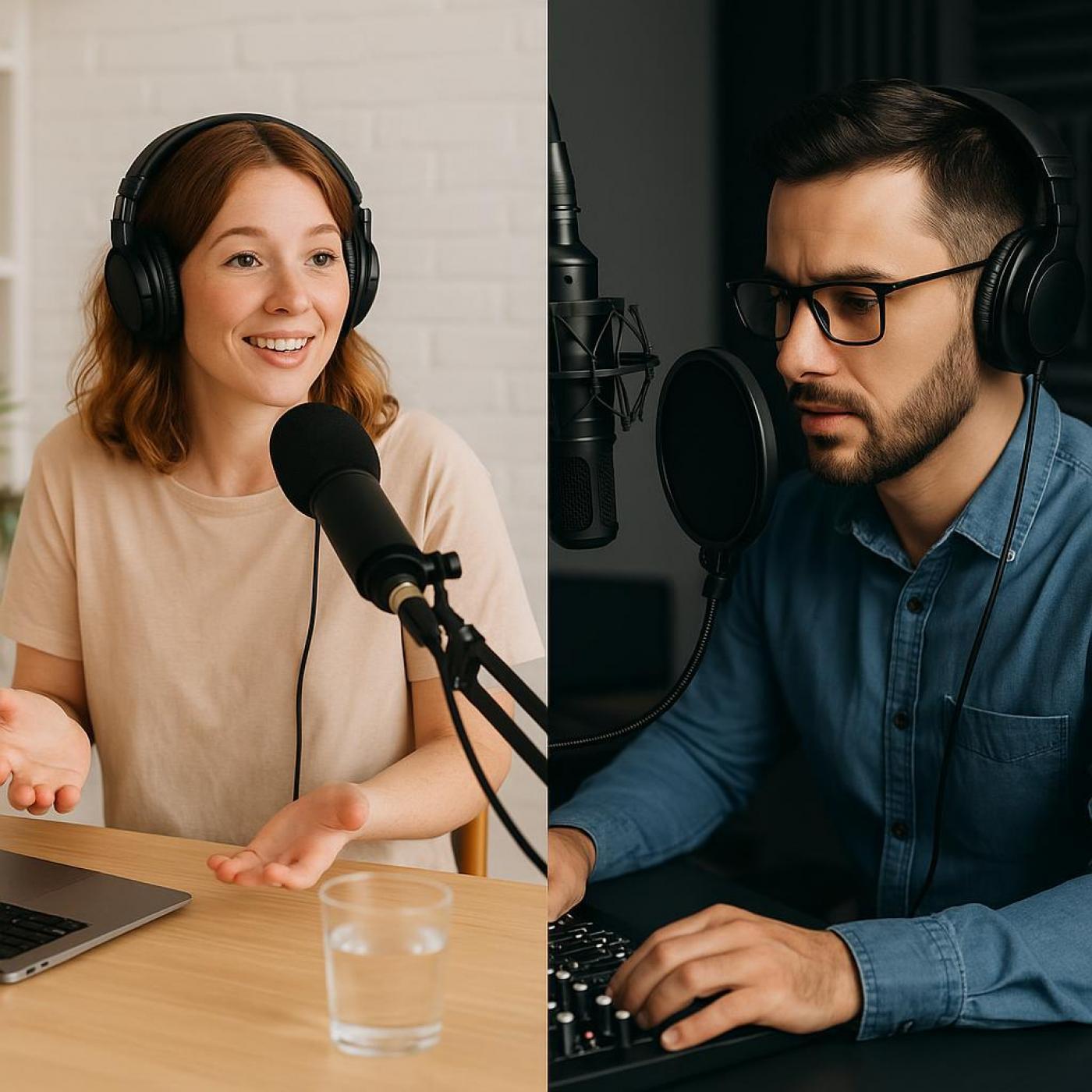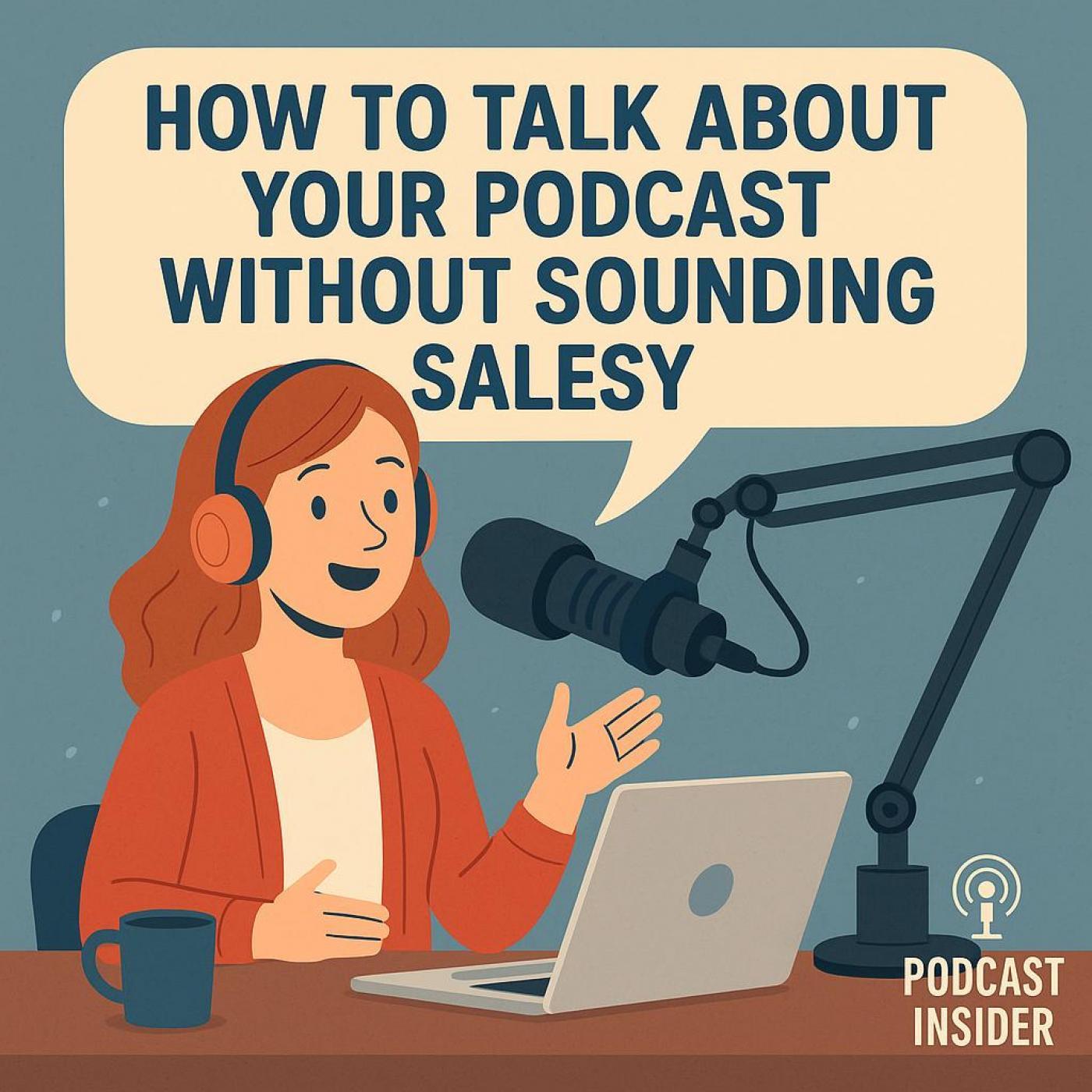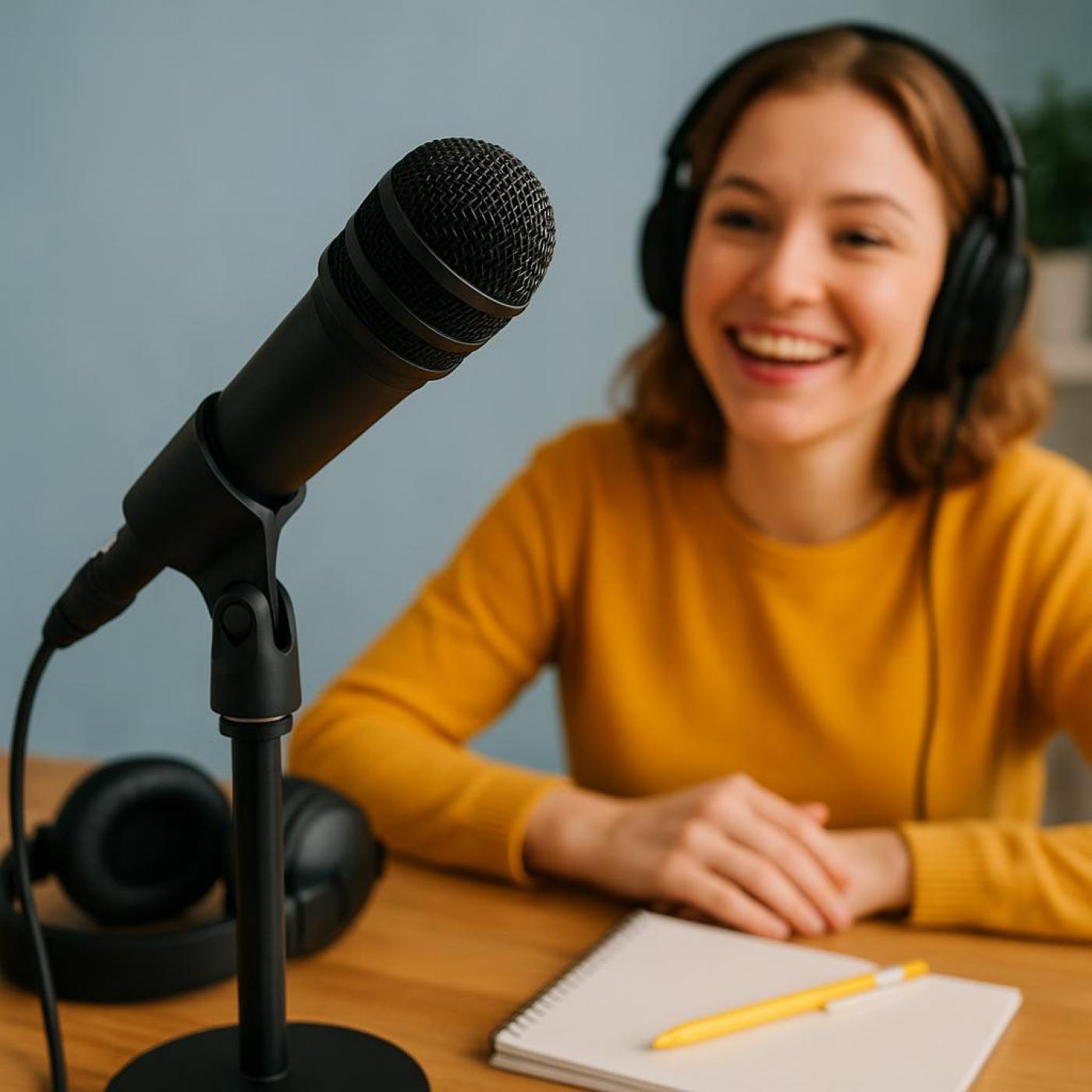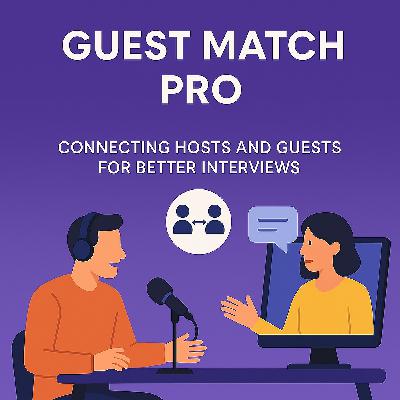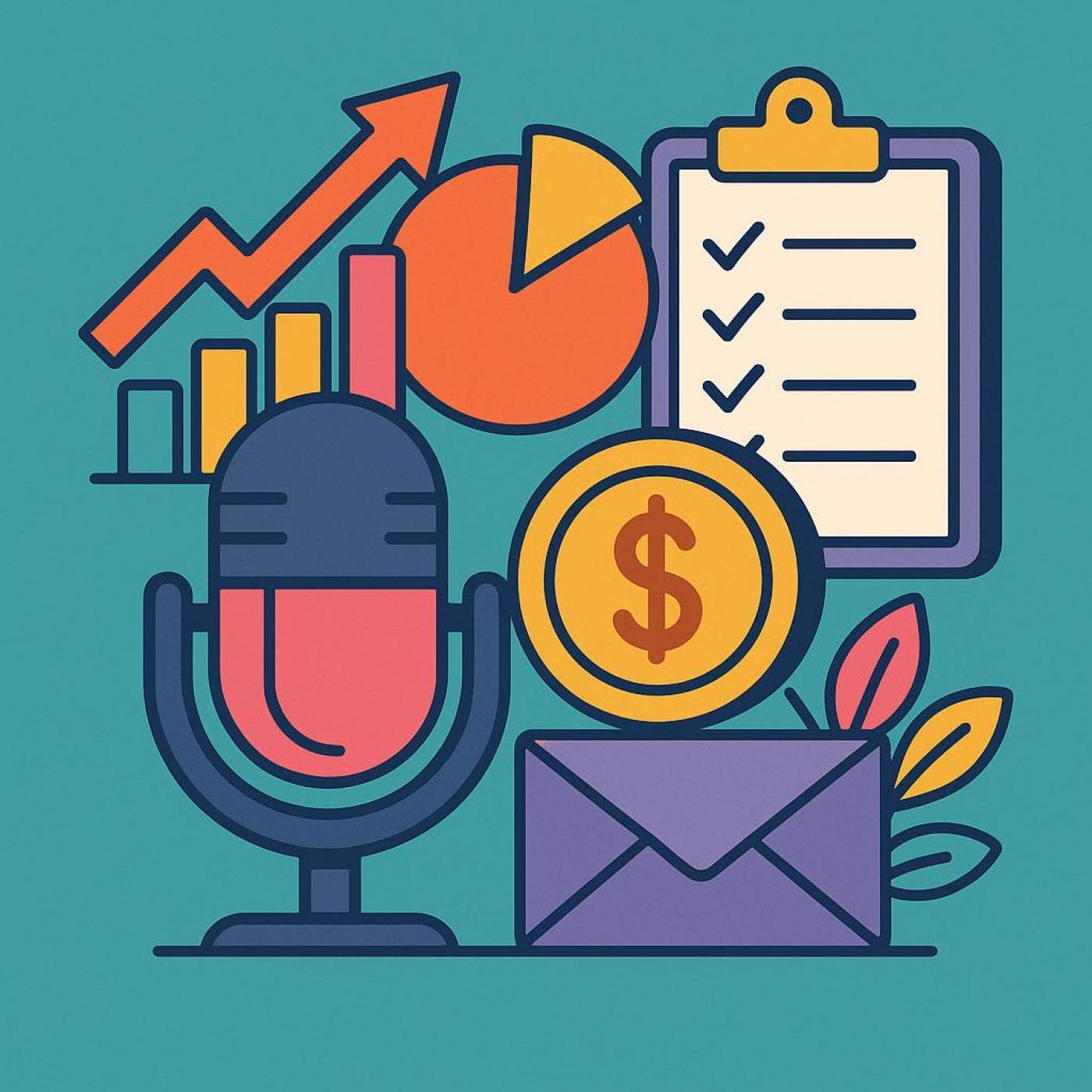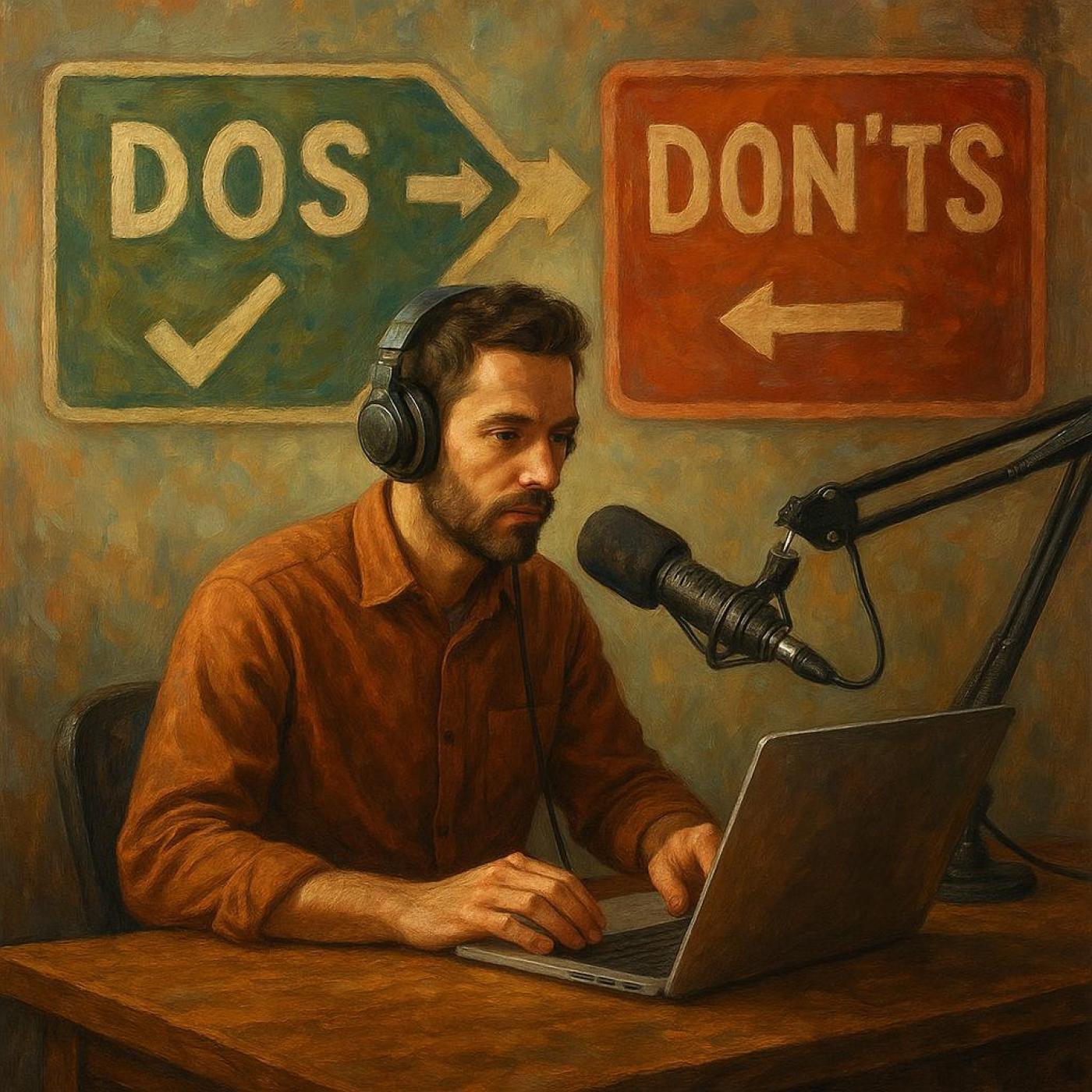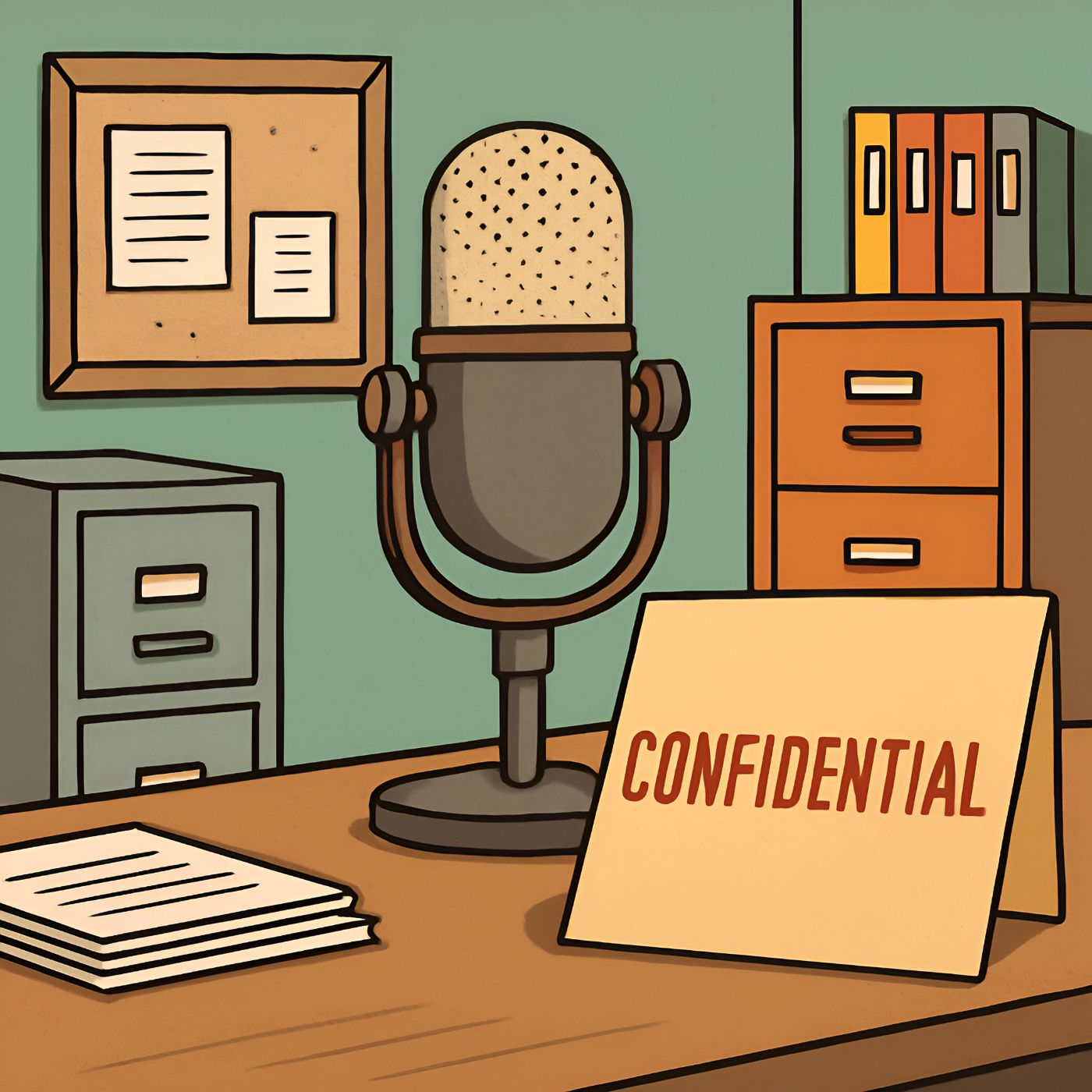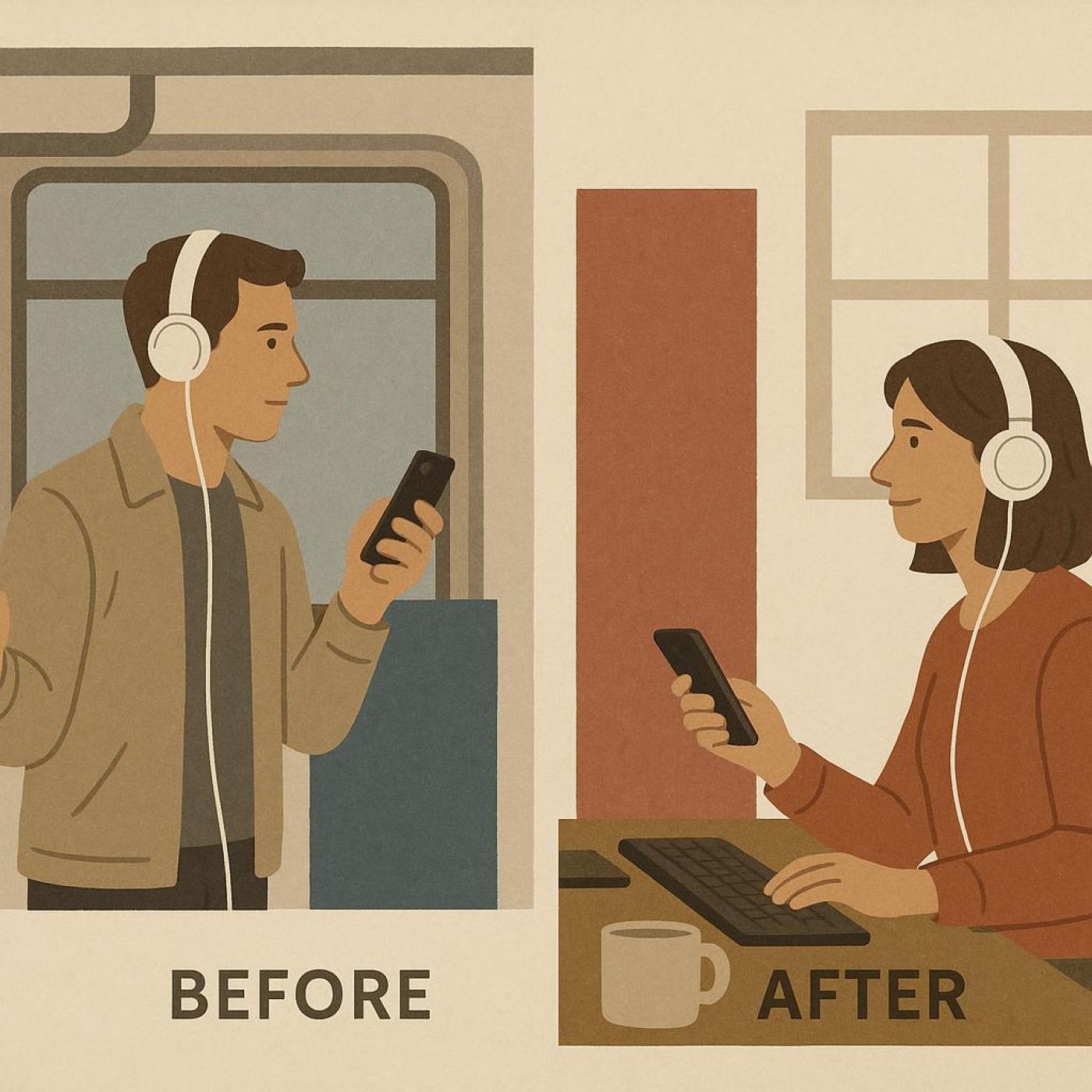Discover Podcast Insider
Podcast Insider

303 Episodes
Reverse
Big audiences get the spotlight — but passionate, niche communities are where podcast success quietly thrives. In this episode of Podcast Insider, we dive into why smaller-focused shows are often more engaged, more loyal, and more profitable than broad, mass-appeal podcasts.
Whether your show is about vintage guitars, homeschooling twins, paranormal tourism, or the science of sleep — the beauty of podcasting is that there’s a niche for everything. We’ll explore how creators can grow strategically by going narrower, not broader.
Today's Hosts: Mike Dell & MacKenzie Bennett
Why Niches Drive Stronger Communities
When listeners feel like the show gets them, they become true fans.
A niche focus leads to:
More qualified listeners
Deeper engagement and retention
Better audience feedback and participation
Fewer competitors in your space
💡 Blubrry helps: Our analytics tools show exactly which topics and episodes resonate most — so you can double down on content your niche loves.
Monetizing Small But Mighty Audiences
You don’t need millions of listeners to earn real revenue.
Smart monetization strategies include:
Affiliate products relevant to your niche
Community memberships or fan-supported models
Partnerships with small brands who serve your audience
Premium content for true fans
The goal? High-value conversations with a clearly defined audience.
💡 Blubrry helps: With Podcasting 2.0 features like Value4Value and subscriptions (via compatible integrations), monetizing loyal listeners is easier than ever.
Marketing a Niche Podcast: Go Where They Are
Instead of trying to reach everyone, reach your people.
Try:
Joining and participating in niche online communities
Creating shareable micro-clips or visuals tailored to your topic
Collaborating with aligned podcasts in your niche
Optimizing episode titles for specific search intent
Small ponds = easier to become the big fish.
💡 Blubrry helps: Use Quicklinks to give new listeners a simple way to subscribe everywhere your show is available.
Listener Takeaway
If your show feels “too small,” that might be your superpower. When you speak directly to a specific group, your podcast becomes indispensable — and that’s what leads to lasting growth.
The best place for all Blubrry support is our ticket system. A ticket gives the whole team access vs. direct emails and calls. General podcasting discussion and more can be shared on the Blubrry Podcasting Facebook group.
Fill out our listener survey at surveys.blubrry.com/podcastinsider
Hosting customers can schedule a one-on-one call for a tech checkup with Mike (mike@blubrry.com).
Podcasting isn’t just about entertainment — it’s a platform for change. Whether you’re raising awareness for an important issue, advocating for a marginalized community, or championing a nonprofit mission, a podcast can amplify voices and create real-world impact.
In this episode of Podcast Insider, we explore how creators can responsibly, authentically, and effectively use their shows to inspire action. From storytelling that sparks empathy to partnerships that fuel momentum, your mic can be a catalyst for something bigger.
Today's Hosts: Dave Clements and MacKenzie Bennett
Why Podcasting Works for Advocacy
Podcasts build trust — and trust leads to action.
Advocacy-driven shows succeed because they:
Create space for personal stories and deeper context
Give underrepresented voices a platform
Encourage ongoing conversation and education
Convert listeners into supporters and volunteers
💡 Blubrry helps: Our detailed stats help you understand whether your message is reaching — and resonating with — the right audience.
Best Practices for Responsible Storytelling
With purpose comes responsibility.
Tips for telling stories ethically:
Prioritize consent and accuracy
Avoid trauma exploitation or sensationalism
Center the people and communities affected
Follow up with resources and actionable next steps
💡 Blubrry helps: Use show notes and episode descriptions to provide clear links to important resources and organizations your listeners can support.
Partnerships That Amplify Impact
You don’t have to lift the mission alone.
Strengthen advocacy by:
Working with nonprofit organizations
Featuring subject-matter experts
Creating campaigns aligned with awareness days/months
Encouraging listeners to share the message
Even small efforts can lead to collective momentum.
💡 Blubrry helps: Quicklinks makes it simple to share subscription options and calls-to-action across every channel — so supporters can spread the word faster.
Listener Takeaway
Podcasting is personal — and that’s what makes it powerful. When you speak up for something that matters, you can inspire your community to take action, learn more, and make a difference.
🔗 Resources & Tools
Blubrry Hosting + Statistics
Quicklinks for sharing and engagement
Podcasting 2.0 value-driven features
Find episode extras and past shows at podcastinsider.com. And if you're ready to grow a mission-driven podcast, visit blubrry.com — we’re here to support you every step of the way.
🎧 Keep advocating. Keep storytelling. Keep making an impact.
The best place for support with any Blubrry product or service is our ticket system. Tickets give the whole team access vs. direct emails or calls. General podcasting discussion and more can be shared on the Blubrry Podcasting Facebook Group.
Fill out our listener survey at surveys.blubrry.com/podcastinsider
Hosting customers can schedule a one-on-one call for a tech checkup with Mike (mike@blubrry.com).
Podcasting connects people everywhere — and chances are, you already have listeners tuning in from around the world. Whether it’s Canada, the UK, India, or beyond, international audiences bring new perspectives and opportunities for growth. In this episode, Dave Clements and Mike Dell talk about how to expand your reach beyond your home country, understand your international audience data, and make your podcast more accessible — no matter where your listeners are tuning in from.
Today's Hosts: Dave Clements and Mike Dell
How to Reach Podcast Listeners All Over the Globe
Why Think Global?
Expanding your reach can help your show grow faster and feel more connected:
Attract listeners from different cultures and regions
Gain fresh ideas, guests, and perspectives
Build community beyond borders
Appeal to international sponsors and collaborations
Blubrry helps: Our IAB-certified podcast statistics show listener data by country and metro area — so you can see exactly where your audience is growing and tailor your outreach accordingly.
Make Your Show International-Friendly
A few simple adjustments can help your content resonate worldwide:
Avoid slang or cultural references that might not translate well
Mention your location early on for context
Include global or universally relatable topics
Feature international guests or highlight other regions’ podcasting scenes
Be mindful of time zones when scheduling live events or premieres
Blubrry helps: With flexible publishing tools, you can schedule releases at times that work for multiple regions — keeping your show consistent and accessible no matter the listener’s location.
Language & Accessibility: Transcripts Matter
Accessibility is key to growing your global reach — and transcripts are a major part of that.
Make your show easier to follow for non-native speakers
Help search engines index your content in more languages
Create opportunities for translated versions of your episodes
Blubrry helps: Our Transcripts Add-On automatically generates accurate episode transcripts that can be easily translated — making your podcast discoverable and inclusive, even for audiences who don’t speak your language.
Promoting Beyond Borders
To reach and retain international listeners, try:
Listing your show on global directories like Deezer (Europe), JioSavvn (India), Gaana (India) and Anghami (MENA countries)
Using international podcast hashtags (#PodcastBrasil, #PodcasterIndia, #PodcastsUK)
Sharing highlights or translated quotes on social media
Collaborating with creators from other countries
Blubrry helps: With Blubrry’s platform, you can easily update episode metadata, add transcripts, and ensure your show looks professional and discoverable worldwide.
The best place for support with any Blubrry product or service is our ticket system. Tickets give the whole team access vs. direct emails or calls. General podcasting discussion and more can be shared on the Blubrry Podcasting Facebook group.
Fill out our listener survey at surveys.blubrry.com/podcastinsider
Hosting customers can schedule a one-on-one call for a tech checkup with Mike (mike@blubrry.com).
Even the most passionate podcasters hit a wall sometimes — especially around the holidays. Between planning episodes, keeping up with publishing schedules, and juggling real-life responsibilities, it’s easy to lose steam. In this episode, we talk about how to recognize burnout before it hits, practical ways to refresh your creativity, and why taking a short break (like over Thanksgiving!) can actually help your show thrive in the long run.
Today's Hosts: Mike Dell and MacKenzie Bennett
Avoiding Podcast Burnout
Spot the Signs of Burnout Early
If podcasting starts to feel like a chore, you might be heading toward burnout. Common signs include:
Episodes feel forced or rushed
You dread recording or editing
You’re running out of topic ideas
You compare your show to others instead of focusing on your own goals
💡 Blubrry helps: With tools like episode scheduling and WordPress publishing, you can plan ahead — giving yourself time off without breaking your release rhythm.
How to Stay Creative (Even When You’re Tired)
When inspiration dips, try changing things up:
Record shorter episodes or bonus updates
Invite a guest host or do a collaboration
Revisit a favorite past topic with a new perspective
Ask your audience what they want to hear next
💡 Blubrry helps: Use our show notes and statistics tools to track which topics resonate most — helping you build new episodes around what’s working best.
Planning Time Off Without Losing Momentum
Taking a holiday hiatus doesn’t mean you’re quitting — it means you’re recharging.
Here’s how to keep listeners engaged while you rest:
Let your audience know ahead of time you’ll be taking a short break
Re-air your most popular episode or create a “Best Of” highlight
Use social media to stay connected without producing full episodes
Come back with a refreshed mindset (and maybe a few new ideas!)
💡 Blubrry helps: With hosting and scheduling tools, you can prep episodes in advance or pause your publishing plan without losing consistency.
Give Yourself Grace This Holiday Season
Podcasting is a marathon, not a sprint. It’s okay to take a break — your audience will still be there when you return. Thanksgiving is the perfect reminder to slow down, reflect, and refuel your creative energy.
💡 Blubrry helps: Our support team is here year-round, and our platform makes it easy to keep your show on track — even when you take time to rest.
The best place for support with any Blubrry product or service is our ticket system. Tickets give the whole team access vs. direct emails or calls. General podcasting discussion and more can be shared on the Blubrry Podcasting Facebook group.
Fill out our listener survey at surveys.blubrry.com/podcastinsider
Hosting customers can schedule a one-on-one call for a tech checkup with Mike (mike@blubrry.com).
As the podcasting landscape evolves, creators are navigating an ever-growing list of listening platforms — each with its own tools, quirks, and agendas. From Apple’s reliable open ecosystem to Spotify’s algorithm-driven discovery and YouTube’s growing push into podcasts, there’s plenty to celebrate… and plenty to question.
In this episode, Mike Dell and Dave Clements break down what these platforms are doing right, what they’re getting wrong, and how independent podcasters can stay in control no matter where their audience listens.
Apple, Spotify & YouTube: A Quick Breakdown
Apple Podcasts – The Classic Choice
✅ Open RSS support (you stay in control)
✅ Trusted directory and wide listener base
⚠️ Analytics limited to Apple users only
⚠️ Subscription model benefits Apple, not every podcaster
Spotify – Great for Discovery, But Closed
✅ Personalized recommendations and listener tools
✅ Expanding features like polls and Q&A
⚠️ Limited transparency in data and downloads
⚠️ Some episodes locked behind Spotify-only access
YouTube – The New Contender
✅ Massive reach, great for visual storytelling - video is really in it’s own moment
✅ YouTube Music’s podcast section improving discoverability
⚠️ No native RSS integration (yet)
⚠️ Audio-only podcasters face upload barriers
💡 Blubrry helps: Our hosting integrates seamlessly with all platforms. Your feed stays open and flexible — so you never lose ownership or audience control.
What They’re Doing Right
Pushing podcasting into new audiences
Adding video options and interactive tools
Making listening easier across devices
What’s Still Wrong
Confusing or inconsistent analytics
Walled gardens that limit true distribution
Monetization models favoring platforms over creators
💡 Blubrry helps: With IAB-certified stats, open distribution, and reliable hosting, you get accurate data and full control — no matter where your listeners are.
The Takeaway: Stay Open, Stay In Control
As platforms evolve, creators have to stay informed. The more you understand what’s happening behind the scenes, the better you can position your show for long-term success.
💡 Blubrry helps: Our mission has always been to keep podcasting open. Your feed, your brand, your audience — always yours.
The best place for support with any Blubrry product or service is our ticket system. Tickets give the whole team access vs. direct emails or calls. General podcasting discussion and more can be shared on the Blubrry Podcasting Facebook group.
Fill out our listener survey at surveys.blubrry.com/podcastinsider
Hosting customers can schedule a one-on-one call for a tech checkup with Mike (mike@blubrry.com).
Interviews are at the heart of many great podcasts — but asking the right questions takes more than reading from a list. In this episode of Podcast Insider, MacKenzie and Dave share tips for crafting thoughtful, engaging conversations that draw out your guest’s best stories and insights. Whether you’re new to interviewing or looking to refine your technique, you’ll learn how to prepare with purpose, stay present in the moment, and guide discussions that truly connect with listeners.
Today's Hosts: MacKenzie Bennett and Dave Clements
How to Improve Your Interviewing Skills for Your Podcast
Start with Curiosity, Not a Script
A good interview starts with genuine curiosity. Instead of racing through a list of questions, focus on listening and reacting.
Tips to improve your flow:
Research your guest, but don’t over-prepare.
Ask one question at a time.
Follow up naturally — not mechanically.
Let the guest finish their thought before jumping in.
💡 Blubrry helps: With our hosting tools and episode scheduling, you can plan interviews with confidence and stay focused on the conversation instead of the tech.
Craft Questions That Open Doors
Avoid yes/no questions and lean into prompts that invite storytelling and reflection.
Try starting with:
“Tell me about…” instead of “Did you…”
“What was going through your mind when…”
“How did that experience change your approach?”
These questions lead to real, memorable answers that keep listeners hooked.
💡 Blubrry helps: Use your show notes and episode descriptions to highlight key takeaways — helping new listeners find your best moments fast.
Silence Is Your Secret Weapon
Most new hosts rush to fill silence, but short pauses can be powerful. They give your guest space to think — and often lead to deeper responses.
Try waiting a full beat after your guest finishes speaking. You might be surprised what they add next.
💡 Blubrry helps: Our post-production options like Media Mastering and transcripts make editing smooth and professional while keeping those natural pauses intact.
Stay Present — Not Performative
The best interviewers sound like they’re discovering the story with their audience.
Be conversational, but intentional:
React honestly.
Summarize or restate what your guest said before moving on.
Don’t chase every tangent — guide gently back to the core topic.
Your job is to keep listeners engaged while helping your guest shine.
💡 Blubrry helps: Whether you’re publishing through WordPress or our Blubrry Dashboard, our tools make it easy to present your content with polish and personality.
The best place for support with any Blubrry product or service is our ticket system. Tickets give the whole team access vs. direct emails or calls. General podcasting discussion and more can be shared on the Blubrry Podcasting Facebook group.
Fill out our listener survey at surveys.blubrry.com/podcastinsider
Hosting customers can schedule a one-on-one call for a tech checkup with Mike (mike@blubrry.com).
Finding Your Voice & What Keeps Listeners Coming Back
Every podcast has a voice, but the most memorable ones have a personality. In this episode of Podcast Insider, Mike, Dave, and MacKenzie break down how your voice, tone, and delivery shape your show’s identity. From finding your natural rhythm to maintaining authenticity without losing polish, we’ll help you understand what keeps listeners coming back — and how to make every episode sound like you.
Today's Hosts: Mike Dell, Dave Clements, & MacKenzie Bennett
Your Voice Is Your Brand
Your “voice” is more than just what comes out of the microphone. It’s your presence, rhythm, and the way you approach your topics and guests.
Ask yourself:
Does my delivery reflect the energy of my show?
Does it match my audience’s expectations?
Am I being conversational, or just reading at them?
Your voice is the thread that ties every episode together — it’s what listeners recognize and come back for.
💡 Blubrry helps: From hosting to websites, our platform helps you define and share your podcast identity — the way you want it heard.
Tone Sets the Mood
Tone is the emotional layer of your show. Whether you’re lighthearted, educational, or serious, being intentional with your tone keeps listeners engaged.
Listeners return when they feel comfortable and connected. A consistent tone builds trust — even subtle shifts can make a big difference.
💡 Blubrry helps: With detailed episode notes and show descriptions, you can set the tone before a listener ever hits play.
Personality Builds Connection
The podcasts people fall in love with have one thing in common — personality.
Your quirks, humor, or unique way of explaining things make your show stand out. That authenticity is what turns casual listeners into loyal fans.
Be genuine, not scripted:
React naturally
Tell stories from your own experience
Let your enthusiasm and curiosity come through
💡 Blubrry helps: Our Pod2Vid tool lets your personality shine across platforms by turning your episodes into engaging, shareable videos.
Authentic ≠ Unpolished
Being authentic doesn’t mean being unprepared. You can sound natural and still respect your listener’s time.
Tips to balance both:
Keep your delivery relaxed but focused
Edit out long pauses or tangents
Pay attention to pacing and transitions
Sounding like yourself is what keeps listeners coming back — sounding bored or unfocused is what drives them away.
💡 Blubrry helps: With Media Mastering and streamlined publishing tools, you can stay authentic while sounding your best every time.
The best place for support with any Blubrry product or service is our ticket system. Tickets give the whole team access vs. direct emails or calls. General podcasting discussion and more can be shared on the Blubrry Podcasting Facebook group.
Fill out our listener survey at surveys.blubrry.com/podcastinsider
Hosting customers can schedule a one-on-one call for a tech checkup with Mike (mike@blubrry.com).
This was Todd’s last episode of Podcast Insider, recorded on September 4th. Todd poured his heart into Blubrry's show and into serving the podcasting community, and we’re honored to share his final conversation here. We’ll be returning to the podcast most likely around mid-October. In the meantime, we want to thank all of our listeners for standing with us as we grieve, reflect, and decide the best way to move forward with the show.
Today's Hosts: Todd Cochrane and MacKenzie Bennett
Planning Podcast Seasons
Some podcasters, like Todd, prefer not to use seasons because they’ve seen how it can disrupt listener habits—especially with shows tied to weekly news or current events. But for many podcasters, seasons can provide structure, creative focus, and built-in opportunities to reset or experiment without losing momentum. The key is knowing your audience and your show’s format, then deciding whether a seasonal approach will help you deliver content more consistently and sustainably.
✅ Start With the Big Picture
Before you dive into episode ideas, take a step back and ask:
What is the theme or goal of this season?
Who is this season for—and what do they want to hear?
How many episodes can you realistically commit to?
Seasons don’t have to be 10 or 12 episodes—some are just 3 to 6. The key is to choose a structure you can stick with and that your audience will appreciate.
💡 Blubrry helps: Use your Blubrry stats to look back at past performance. What topics resonated most? What formats kept listeners around? Let your data guide your next season.
✅ Brainstorm, Then Batch Plan
Once you’ve locked in your season theme or focus, start brainstorming topics. Don’t overthink it—jot down everything that fits.
Then organize your ideas by:
Episode title or working title
Main talking points or guest ideas
Any time-sensitive topics that should go earlier in the season
Batch planning gives you a head start, so you're not scrambling week to week.
💡 Blubrry helps: With built-in episode drafting and scheduling tools, your podcast dashboard makes it easy to prep ahead and stay consistent.
✅ Book Guests (or Solo Prep) Early
If your season includes interviews, start reaching out to guests as early as possible. Provide a general timeline and ask about their availability over the next few weeks.
If you’re doing a solo season, block out time to record multiple episodes at once. This is key for staying on track.
💡 Blubrry helps: Need to find guests? Use Guest Match Pro, Blubrry’s creator connection platform, to match with qualified guests and message them directly.
✅ Set a Publishing Schedule—and Stick to It
Decide when your season will launch, how often episodes will drop (weekly, biweekly, etc.), and when it will wrap up.
Then share that schedule with your audience. This builds trust and anticipation—and it gives you clear milestones to work toward.
💡 Blubrry helps: Auto-publishing tools let you schedule your season in advance so episodes go live even when you’re not at your desk.
✅ Don’t Forget Promo & Wrap-Up Content
A season isn’t just the episodes—it’s also the buzz you build around it.
Plan content like:
A trailer or teaser for the season
Social media graphics or audiograms
A wrap-up episode or blog post summarizing key takeaways
💡 Blubrry helps: Tools like Pod2Vid and your free podcast website help you create and share that extra content without starting from scratch.
Thanks for listening to Podcast Insider, you can subscribe to new episodes out every Monday.
The best place for support with any Blubrry product or service is our ticket system. Tickets give the whole team access vs. direct emails or calls. General podcasting discussions and more can be shared on the Blubrry Podcasting Facebook group.
Fill out our listener survey at surveys.blubrry.com/podcastinsider
Hosting customers can schedule a one-on-one tech checkup with Mike at mike@blubrr...
Remembering Todd Cochrane, Podcast Hall of Famer and Blubrry CEO
On this special tribute episode of Podcast Insider, we honor the life, legacy, and impact of Todd Cochrane — our co-host, Podcast Hall of Famer, founder of Blubrry and RawVoice, long-time host of Geek News Central, author of one of the very first podcasting books, creator of the People’s Choice Podcast Awards, and co-host of The New Media Show for more than 13 years.
Todd’s contributions to podcasting were immeasurable. From launching one of the earliest shows in 2004 to championing open RSS feeds, podcaster independence, and fair monetization, he shaped the modern podcasting landscape. His leadership and conviction inspired countless creators, and his generosity left a lasting imprint on the global podcasting community.
In this heartfelt conversation — originally recorded for The New Media Show — host Rob Greenlee (Podcast Hall of Famer) is joined by a panel of voices who knew Todd best and witnessed his extraordinary journey:
Rob Walch, VP of Podcaster Relations at Libsyn and fellow Podcast Hall of Famer
Mike Dell, VP of Customer Relations at Blubrry and long-time collaborator
Adam Curry, Podcast Hall of Famer and co-creator of podcasting
Together, they reflect on Todd’s path — from his Navy service to becoming a respected leader and advocate in podcasting. They share stories of his tireless work ethic, his unwavering belief in independent creators, his innovation in podcast monetization and measurement, and his vision for the future of the medium.
Todd’s final episode of Podcast Insider, recorded shortly before his passing, will be released soon as a lasting part of his voice and dedication to podcasters everywhere.
This episode is both a remembrance and a celebration of a man who helped build podcasting into what it is today. Todd’s voice may be gone, but the mission he dedicated his life to carries on.
💙 We invite the podcasting community to join us in honoring Todd’s memory by continuing to support open podcasting and independent creators, the causes he championed most.
What separates a casual podcast from a “professional” one—and does it really matter in 2025? In this episode of Podcast Insider, Todd, Mike, and MacKenzie break down what it means to be a professional podcaster, the different interpretations of the word “professional,” and how podcasters can level up their show without losing their authenticity. Whether you’re podcasting as a hobby or building a brand, we’ll help you understand the standards, expectations, and options available to you.
Today's Hosts: Mike Dell, Todd Cochrane and MacKenzie Bennett
And a happy Labor Day to all our podcasters.
✅ Professional = Purposeful
Being professional doesn’t necessarily mean making money or having sponsors. A professional podcast is:
Consistent in its publishing
Clear in its message or purpose
Respectful of the listener’s time and experience
It’s more about intention than income. Plenty of unpaid shows are professional because they’re well-crafted and focused.
💡 Blubrry helps: With built-in tools for scheduling, show notes, and publishing, our dashboard helps keep your workflow organized and consistent.
✅ Where Quality Comes Into Play
Audio quality is often the first thing people think of when they hear “professional”—and yes, it matters. But you don’t need a studio or high-end gear.
Professional quality can come from:
A quiet recording space
Good mic technique
Basic editing to remove distractions
Clear intros and outros that help guide the listener
💡 Blubrry helps: We offer media mastering and transcripts that help polish your content for a more professional feel—without overcomplicating things.
✅ Is Your Podcast “For Fun” or “For Growth”?
This is where the “does it matter?” question comes in. If you’re just podcasting for fun, there’s no need to force yourself into a professional mold.
But if you want to:
Attract sponsors or collaborators
Grow your audience
Be taken seriously in your industry
…then it’s worth aiming for a more professional approach.
💡 Blubrry helps: We give you access to IAB-certified podcast statistics, a customizable podcast website, and monetization options like programmatic ads and subscriptions.
✅ Professional Doesn’t Mean “Corporate”
Let’s be clear: professional ≠ boring.
You don’t need to lose your personality or niche style to be taken seriously. The most memorable podcasts are:
Authentic
Passionate
Listener-focused
Easy to follow
Think of professionalism as a framework—not a muzzle.
💡 Blubrry helps: Our tools adapt to your show, not the other way around. Whether you're niche, newsy, narrative, or nerdy—we’ve got you covered.
Promoting your podcast doesn’t have to feel awkward or salesy. In this episode of Podcast Insider, we share practical ways to talk about your show with confidence—whether you’re chatting with friends, posting on social media, or networking at events. You’ll learn how to highlight your purpose, use storytelling instead of pitches, and spark curiosity that leads people to want to listen—without ever sounding pushy.
Today's Hosts: Todd Cochrane and MacKenzie Bennett
✅ Lead With the Why, Not the Download Link
When talking about your podcast, start with why it exists—not just where to find it. People connect with purpose and personality more than self-promotion.
Instead of saying, “Hey, check out my podcast!” try:
“I host a podcast about how small-town chefs are changing the food scene—ever heard of that movement?”
“I’ve been interviewing people who left corporate jobs to start farms—it’s been eye-opening.”
Letting the conversation flow from what you’re passionate about makes people more likely to ask follow-up questions—and then they open the door to you sharing your link.
💡 Blubrry helps: Use your free podcast website or custom episode URLs to easily share your show when people do ask for it.
✅ Share Clips and Stories, Not Just “New Episode!” Posts
Instead of promoting a new episode with just the title or a generic link, pull out a powerful quote, a surprising moment, or a quick teaser.
Some ideas:
“This guest turned their side hustle into a full-time gig—here’s how they did it.”
“Our latest episode dives into what it’s really like to start over in your 40s.”
Use visuals like audiograms, quote graphics, or a short reel to give people a taste before asking them to commit to listening.
💡 Blubrry helps: Easily create short video teasers with Pod2Vid, and share them on social with your custom links.
✅ Think Conversations, Not Commercials
Whether you’re at a networking event or casually chatting online, focus on the person, not the pitch.
Ask them what kind of content they listen to.
Share how your show relates to a topic they care about.
Or invite them to give feedback on an idea you’re working on.
This approach builds connection and curiosity—without forcing the conversation toward a download.
💡 Blubrry helps: Your listener analytics show what’s resonating most, so you’ll know what topics spark real engagement.
✅ Make Your Show Easy to Talk About
If your podcast name, description, or purpose is confusing or overly vague, it’s hard for people to share it on your behalf.
Refine your elevator pitch so you (and others) can describe your show in one sentence.
Example:
“It’s a weekly show about creative burnout—and how people push through it.”
“The podcast shares short stories from first-time entrepreneurs—5-minute episodes, no fluff.”
💡 Blubrry helps: Hosting with us means your show is listed across major directories, making it easy for new listeners to find you—especially when they hear about you from someone else.
Thanks for listening to Podcast Insider, you can subscribe to new episodes out every Monday.
The best place for support with any Blubrry product or service is our ticket system. Tickets give the whole team access vs. direct emails or calls. General podcasting discussions and more can be shared on the Blubrry Podcasting Facebook group.
Fill out our listener survey at surveys.blubrry.com/podcastinsider
Hosting customers can schedule a one-on-one call with Todd or a tech checkup with Mike at todd@blubrry.com and mike@blubrry.com
Stay tuned for more episodes and visit our website for the latest updates and resources.
Whether you’re just starting out or refining your setup, great audio is the foundation of a great podcast. In today's episode of Podcast Insider, we share practical tips for getting professional-sounding results—covering mic choice, positioning, background noise reduction, recording formats, and techniques to boost your on-mic confidence. Follow these steps and you’ll sound clearer, warmer, and more engaging to your listeners.
Today's Hosts: Mike Dell and Todd Cochrane
🎧 Mic Tips for Your Best Podcast Sound
Use the Right Mic (and Know How to Use It)
A dynamic mic (like the Shure SM7B or Samson Q2U) is great for voice and podcasting.
Speak into the correct side—usually the front, not the top.
Mic Positioning Matters
Stay about 2–3 inches from the mic.
Use a pop filter or windscreen to reduce plosives (hard P and B sounds).
Slightly angle the mic off-center from your mouth to avoid breath noise.
Reduce Background Noise
Record in a quiet, carpeted room with soft furnishings.
Turn off fans, HVAC, and silence notifications.
Consider a noise gate or suppression plugin if needed.
Let Blubrry Master Your Audio Automatically
Hosting customers can use Media Mastering by Auphonic, an add-on that automatically enhances your audio file during upload.
It balances loudness, reduces background noise, and smoothes out small mic imperfections -- giving your episode a polished, professional sound without extra effort.
Watch Your Levels
Aim for -12dB to -6dB when recording. Avoid peaking (clipping).
Use headphones to monitor while recording—this helps catch issues early.
Record in WAV, Not MP3
Always record in uncompressed formats (like WAV) for highest quality, then convert to MP3 for publishing.
🎤 Confidence Tips for Sounding Natural and Engaging
Practice Before Recording
Do a short “warm-up” session. Talk out loud about your topic for a few minutes off-mic.
Practice your intro and key points—don’t wing it unless you’re a seasoned pro.
Use Bullet Points, Not Scripts
Reading can sound stiff. Instead, work from an outline so you sound natural and conversational.
Smile When You Speak
It changes your tone and helps you sound more warm and confident.
Pause with Purpose
Silence is powerful. Don’t rush. Short pauses give listeners time to absorb and give you time to breathe.
Imagine Talking to One Person
Picture your ideal listener. This keeps your delivery personal and focused—not like you’re broadcasting to a crowd.
Listen Back & Improve
Review your episodes occasionally. Note areas where you sound strongest—and where you can grow.
Fake It 'Til You Sound It
Confidence grows with repetition. Even if you’re nervous, keep showing up. You’ll find your voice over time.
Thanks for listening to Podcast Insider, you can subscribe to new episodes out every Monday.
The best place for support with any Blubrry product or service is our ticket system. Tickets give the whole team access vs. direct emails or calls. General podcasting discussions and more can be shared on the Blubrry Podcasting Facebook group.
Fill out our listener survey at surveys.blubrry.com/podcastinsider
Hosting customers can schedule a one-on-one call with Todd or a tech checkup with Mike at todd@blubrry.com and mike@blubrry.com
Stay tuned for more episodes and visit our website for the latest updates and resources.
In this episode of Podcast Insider, host Mike Dell talks with Vern Hume, creator of the long-running science fiction podcast Makeshift Stories. Since 2008, Vern has been crafting original, clean-rated audio stories that captivate listeners of all ages. Now releasing episodes monthly, Vern shares his passion for storytelling, the evolution of his show, and the technical craft behind creating immersive audio experiences.
Today’s Host: Mike Dell
Vern is our August Podcaster of the Month, where we explored the mysterious and imaginative worlds he creates in Makeshift Stories. Known for blending science fiction, fantasy, and the surreal, Vern’s stories invite listeners to fill in the gaps with their own imagination—earning him praise as “a slightly gentler but equally insightful Twilight Zone.”
Inside the Creative World of Makeshift Stories with Vern Hume
✅ About Makeshift Stories
Makeshift Stories is a monthly science fiction podcast featuring original tales that blend creativity, imagination, and high-quality production. Initially launched as a bi-monthly show for kids, it has evolved into content for an adult audience while remaining family-friendly. With over 300 episodes produced, Vern has recently scaled back to focus on both the podcast and his book project.
✅ Behind the Mic with Vern Hume
Vern’s love for audio storytelling began in childhood, inspired by radio dramas. His podcasting journey has been shaped by:
A commitment to original, high-quality audio fiction
Collaboration with multiple narrators to bring characters to life
A clean rating for accessibility to all listeners
Technical dedication to sound quality, using tools like an RME interface, ribbon mics, SM7B, and Isotope RX for post-production polishing
Vern prefers working with narrators rather than voicing stories himself, ensuring each episode meets his exacting production standards.
✅ The Craft of Podcasting
In the conversation, Vern and Mike explore:
The evolution of podcasting gear and software over the years
How AI is becoming part of creative processes (including Vern’s AI-inspired flash fiction)
The importance of focusing on content and audience over download stats
Why niche audiences can be more rewarding than chasing mass listenership
✅ Advice for New Podcasters
Vern encourages new creators to:
Prioritize storytelling and audience connection over numbers
Invest in quality audio setups and learn editing techniques
Be consistent but realistic with publishing schedules
Measure success in ways that matter personally, not just by metrics
Podcaster of the Month: August 2025
We’re proud to recognize Vern Hume as our Podcaster of the Month. His dedication to storytelling and the podcasting craft is an inspiration to creators everywhere. Read our blog post about it here.
🎧 Listen to Makeshift Stories at makeshiftstories.com
Thanks for listening to Podcast Insider, you can subscribe to new episodes out every Monday.
The best place for support with any Blubrry product or service is our ticket system. Tickets give the whole team access vs. direct emails or calls. General podcasting discussions and more can be shared on the Blubrry Podcasting Facebook group.
Fill out our listener survey at surveys.blubrry.com/podcastinsider
Hosting customers can schedule a one-on-one call with Todd or a tech checkup with Mike at todd@blubrry.com and mike@blubrry.com
Stay tuned for more episodes and visit our website for the latest updates and resources.
Guest Match Pro beta is now live!
In this episode of Podcast Insider, we introduce Guest Match Pro, Blubrry’s new platform built to connect creators, guests, and agencies. Whether you're a podcaster, coach, author, or media pro, Guest Match Pro helps streamline the process of finding and booking interviews across industries. We’re diving into what it does, who it’s for, and why now is the perfect time to join the beta—especially if you’re looking to grow your reach and collaborate more efficiently.
Today's Host: Todd Cochrane, MacKenzie Bennett, & Mike Dell
✅ What Is Guest Match Pro?
Guest Match Pro is Blubrry’s new creator connection platform designed to make it easier for people to collaborate. That includes:
Creators who need guests for their show or channel
Guests who want to be interviewed and featured
Agencies managing multiple clients who want to get booked
It’s not just for podcasters—it’s for anyone who uses interviews to build content or visibility. You can search by category, content type, or niche, and match with relevant creators or guests in minutes.
✅ What You Can Do in the Beta
Guest Match Pro will very soon be available in beta, which means you’ll be able to:
Build a public profile for yourself or your clients
Choose your role(s): guest, creator, agency—or all three
Filter and match with others based on shared interests or content goals
Use built-in messaging to communicate and schedule
Bookmark profiles, track connections, and manage your network
Agencies can manage multiple clients from a single dashboard, and individuals can toggle between guest and creator roles. And if you're a Blubrry hosting customer, Guest Match Pro is already integrated into your dashboard—no extra logins or setup required.
✅ Why Join Now
This is just the beginning. During beta, all creators can join for free—and Blubrry hosting customers will continue to get Guest Match Pro at no cost after the beta ends.
We're also actively collecting feedback from beta users. Your experience and suggestions will help shape future features and improvements, including enhancements to filtering, matching accuracy, and collaboration tools.
Now’s your chance to explore the platform, grow your network, and be part of building the next great tool for creators.
✅ It’s Not Just for Podcasters
Guest Match Pro is open to all types of creators:
Coaches and consultants
Authors on book tours
Educators and speakers
Radio hosts and livestreamers
Agencies promoting expert clients
If interviews, exposure, or audience-building is part of your strategy—Guest Match Pro was built with you in mind.
Guest Match Pro Beta Feedback
We want to make this as seamless as possible, so please, if you're using the Guest Match Pro beta, fill out our feedback form so we can fix bugs, make changes and get the general feel for the user experience.
Provide feedback here.
Thanks for listening to Podcast Insider, you can subscribe to new episodes out every Monday.
The best place for support with any Blubrry product or service is our ticket system. Tickets give the whole team access vs. direct emails or calls. General podcasting discussions and more can be shared on the Blubrry Podcasting Facebook group.
Fill out our listener survey at surveys.blubrry.com/podcastinsider
Hosting customers can schedule a one-on-one call with Todd or a tech checkup with Mike at todd@blubrry.com and mike@blubrry.com
Stay tuned for more episodes and visit our website for the latest updates and resources.
As podcasting becomes more competitive, a dedicated website isn’t just a nice-to-have — it’s a vital tool. In today’s episode of Podcast Insider, Mike Dell and Todd Cochrane revisit why having a podcast website can help you grow your audience, strengthen your brand, and create monetization opportunities.
In 2024 and beyond, a well-designed, functional website can set your show apart — but we’ll also cover reasons why you might not want one, depending on your goals and bandwidth.
Today’s Hosts: Mike Dell and Todd Cochrane
✅ Reasons to Have a Podcast Website
Your Show’s Central Hub – Your Moonbase Alpha
It’s the best place to send your listeners.
If your show disappears from podcast apps, fans still know where to find you.
SEO (Search Engine Optimization)
Helps your show get discovered when people search for your topics or guests.
Lets you create more detailed, searchable show notes.
Branding
Total control over the look, feel, and voice of your brand.
Audience Engagement
Include a forum, contact form, or email signup to build community and keep in touch.
Monetization
Promote sponsors, sell merch or services, and even run ads like AdSense.
Bonus Content & Resources
Add blogs, video content, transcripts, and links to additional resources.
Web Analytics
Use tools like Google Analytics to understand your audience’s behavior.
A Place for Everything
Podcast players
Episode archive or playlist
Contact info
Announcements
Merch store
Ads and sponsor details
Your services and products
🤔 Why You Might Not Want a Podcast Website
Time Constraints
Keeping a website updated does take effort.
Technical Skills
Not everyone is comfortable building a website — but it’s easier than you might think.
Cost
Domain registration and web hosting come with a price.
However, Blubrry includes a free podcast website with hosting.
Focus on Core Content
If you’d rather focus purely on the audio, that’s okay too.
Keeping It Simple
Sometimes simplicity is the best route.
Social Media Presence
If most of your audience engagement already happens on social media, a separate website may not be necessary.
Thanks for listening to Podcast Insider, you can subscribe to new episodes out every Monday.
The best place for support with any Blubrry product or service is our ticket system. Tickets give the whole team access vs. direct emails or calls. General podcasting discussions and more can be shared on the Blubrry Podcasting Facebook group.
Fill out our listener survey at surveys.blubrry.com/podcastinsider
Hosting customers can schedule a one-on-one call with Todd or a tech checkup with Mike at todd@blubrry.com and mike@blubrry.com
Stay tuned for more episodes and visit our website for the latest updates and resources.
You don’t need a big team or a huge ad budget to market your show—you just need the right plan. So today’s episode is divided into two paths: one for podcasters who are already publishing, and another for those who are still in the planning or pre-launch phase.
Today's Hosts: Todd Cochrane and MacKenzie Bennett
✅ If You’ve Already Launched Your Podcast
These strategies help you understand where to invest, even if your budget is modest—and how to use Blubrry tools to amplify your results.
1. Start With a Monthly Budget That Works
What can you realistically commit to spending each month?
$10–25: Social posts, audiograms, promo swaps
$25–100: Boosted content, Overcast ads, email tools
$100+: Contractors, social media managers, ad campaigns
💡 Blubrry helps: Your free podcast website, publishing tools, and included support already cover key basics—so more of your budget can go toward outreach.
2. Set Specific Goals for Each Quarter
Your spending should support a measurable goal.
Examples: Grow your newsletter, boost downloads, increase social reach
💡 Blubrry helps: IAB-certified podcast stats let you track downloads by episode, geography, and listening platform—so you’ll know what’s working.
3. Use Free Marketing First
Before paying for exposure, focus on consistency and visibility.
Swap promos with other podcasters
Share your show in relevant communities
Repackage past content as teasers or clips
💡 Blubrry helps: Custom episode URLs and your podcast website make sharing your content super easy and trackable.
4. Stick With One or Two Platforms
Don’t spread yourself thin—put your time (and money) where your audience is.
Pick one social platform and one podcast discovery tool
💡 Blubrry helps: You can monitor where listeners are coming from using your dashboard analytics.
5. Track ROI With Simple Tools
You don’t need fancy reporting—just a way to check if your spend is helping.
Create a basic spreadsheet: cost, goal, outcome
💡 Blubrry helps: Your hosting dashboard makes it easy to see what content is gaining traction after promotion with the event tracker.
🚀 If You Haven’t Launched Your Podcast Yet
These strategies help you lay a strong foundation before you publish—and use your pre-launch time to build interest.
1. Create a Pre-Launch Budget
Even if your show isn’t live, a small monthly budget can go toward:
Graphics or teaser trailers
A basic email platform
Building a landing page
💡 Blubrry helps: Your Blubrry website is ready from day one—no extra web hosting costs.
2. Define a Simple Goal Before Launch
What’s your #1 objective before episode one drops?
Build an email list
Attract early social followers
Collect feedback from a trailer
💡 Blubrry helps: You can publish a trailer episode across directories using Blubrry, even if your show isn’t fully launched.
3. Engage Where Your Future Audience Is
Join online communities, follow hashtags, and interact with potential listeners.
Reddit threads, Facebook groups, LinkedIn, TikTok
💡 Blubrry helps: Your teaser content and podcast website can be shared directly into conversations to start building hype.
4. Start Growing Your Email List
Use your pre-launch period to collect emails.
Create a basic opt-in form: “Be the first to hear my new podcast!”
💡 Blubrry helps: Embed a signup form right on your included podcast website.
5. Use a Trailer to Test and Promote
You don’t need a full episode to start building momentum.
Record a 2–5 minute preview
Ask for feedback in communities or on social
💡 Blubrry helps: Blubrry lets you distribute your trailer to Apple, Spotify, and other platforms—all from your dashboard.
Thanks for listening to Podcast Insider, you can subscribe to new episodes out every Monday.
The best place for support with any Blubrry product or service is our ticket system.
Ever wanted to learn how to switch podcast hosting providers or website hosts?
Thinking about moving your podcast website from WordPress to another platform? Before you make the switch, there are some crucial things you need to know — especially about your RSS feed. In this episode, we’re tackling one of the most common (and frustrating) issues podcasters face when migrating their site: broken podcast feeds. We’ll walk you through how to protect your feed, handle media files, preserve your SEO, and make a smooth transition without losing your audience in the process.
Today's Hosts: Mike Dell and Dave Clements
We often hear from podcasters who say something like, “My web designer moved my website from WordPress to [insert platform], and now my feed doesn’t work!” Hopefully, in this episode, we will explain what you need to think about and plan for when moving your website, so you don’t run into the same problem.
Dos and Don'ts of Platform Podcast Migration
1. Understand how your RSS feed works now
When you use PowerPress, your podcast RSS feed is usually something like yoursite.com/feed/podcast/.
Podcast apps (Apple, Spotify, etc.) and your listeners get new episodes from that feed, not directly from your website pages.
If you shut down your WordPress site without properly redirecting that feed, your podcast will stop updating for everyone subscribed.
2. Plan how to preserve your feed
There are two common approaches:
Keep your WordPress site running only to keep the feed active, while your new website lives on another platform.
Move your feed to a feed hosted by Blubrry. We can turn on a Blubrry feed that you can redirect to. If you are not hosting on Blubrry, you must recreate that feed somewhere else. (Blubrry Hosting).
VERY IMPORTANT, you must set up a 301 redirect from the old feed address to the new one so all podcast apps and directories get the new location automatically.
3. Handle your media files
If you’ve been hosting audio files on your WordPress server, you’ll need to:
Move them to a podcast hosting service or another reliable server.
It’s best practice to use a dedicated podcast host so your new website platform isn’t burdened with serving large audio files.
Of course, we recommend Blubrry. Contact us for help migrating your show.
4. Maintain SEO and backlinks (somewhat important)
Your WordPress site probably has episode pages that show up in search results or are linked around the web.
If you move to a new web platform that uses a different URL structure, you’ll need to set up page-level redirects so listeners don’t get broken links.
Also, check your embedded players — you may need to update them to work with your new site.
5. Update podcast directories
If your feed URL changes, make sure to update it in Apple Podcasts, Spotify, and other directories.
Many directories will follow your 301 redirect automatically, but some require you to log in and update the feed address manually.
6. Have a transition plan
Test your new feed thoroughly before switching.
If possible, announce the move to your listeners.
Keep the old feed or site running for at least 30–60 days with redirects in place to catch any stragglers and to give time for all apps to update.
Thanks for listening to Podcast Insider, you can subscribe to new episodes out every Monday.
The best place for support with any Blubrry product or service is our ticket system. Tickets give the whole team access vs. direct emails or calls. General podcasting discussions and more can be shared on the Blubrry Podcasting Facebook group.
Fill out our listener survey at surveys.blubrry.com/podcastinsider
Hosting customers can schedule a one-on-one call with Todd or a tech checkup with Mike at todd@blubrry.com and mike@blubrry.com
Stay tuned for more episodes and visit our website for the latest updates and resources.
In this special episode of Podcast Insider, we’re spotlighting Michelle Aronson, host of True Stories at Work and Blubrry’s Podcaster of the Month! Michelle joined Mike Dell to share her journey from a silent retreat to the world of podcasting, how her HR background fuels her unique storytelling format, and why workplace tales are often stranger—and funnier—than fiction.
Hear how podcasting unexpectedly opened doors in her coaching business, the value of audio storytelling in an increasingly digital world, and what it takes to uncover those unforgettable moments from the office. Michelle also shares one of her wildest listener-submitted workplace confessions—and why she’s always on the hunt for more.
🔍 In This Episode:
How True Stories at Work was born from stillness and curiosity
Michelle’s shift from “HR expert” to “podcaster first”
Why storytelling is her teaching superpower
The importance of culture in navigating remote vs. in-person work
Promotion tips for podcasters struggling with growth
The beloved (and sometimes tricky) “Workplace Confessions” segment
A harmonica… and a termination? You have to hear this story.
🧰 Tools & Tips Mentioned:
Promote your podcast through community engagement (forums, Reddit, groups)
Recycle episode content with short clips and visuals on LinkedIn, YouTube, and more
Encourage listener interaction through call-ins and confessions
Stay consistent with your release schedule to build audience habits
🎧 Where to Find Michelle:
Podcast Website: TrueStoriesAtWork.com
Business Website: CultureAndStrategyLab.com
Want to submit a workplace confession? Visit her website—anonymous stories welcome!
📌 Episode Shoutouts:
Big thanks to Michelle Aronson for joining us! Read the blog about her show here.
Stay tuned for more Podcaster of the Month features and podcasting insight.
Thanks for listening to Podcast Insider, you can subscribe to new episodes out every Monday.
The best place for support with any Blubrry product or service is our ticket system. Tickets give the whole team access vs. direct emails or calls. General podcasting discussions and more can be shared on the Blubrry Podcasting Facebook group.
Fill out our listener survey at surveys.blubrry.com/podcastinsider
Hosting customers can schedule a one-on-one call with Todd or a tech checkup with Mike at todd@blubrry.com and mike@blubrry.com
Stay tuned for more episodes and visit our website for the latest updates and resources.
At Blubrry, we love independent podcasting.
The heart of what makes podcasting so unique — independence. As corporate platforms grow louder in the space, it's more important than ever for creators to understand how to retain control of their voice, content, and audience. From choosing the right tools and hosting partners to marketing yourself as a creator-owned brand, we explore what podcasting independence really means and how it benefits both your creativity and your business. Whether you're just getting started or rethinking your podcasting path, this episode is packed with insights to help you stay true to your vision.
Today's hosts: Mike Dell, Todd Cochrane, MacKenzie Bennett
1️⃣ Why Podcasting Independence Matters More Than Ever
Podcasting has always been a space where creators could own their voice and their audience. But as big media continues to move in, it’s important to understand what independence really looks like — and why it’s worth protecting.
Why it matters:
You control your content and message.
You own your brand and audience — no platform can lock you in or dictate your direction.
You decide how you monetize, whether that’s ads, premium content, listener support, or all of the above.
Independence builds trust — listeners value authenticity and transparency.
💡 Tip: If a service or platform limits where your podcast appears, who can access it, or how you can monetize, it may be undermining your independence.
2️⃣ Marketing Yourself as an Independent Voice
Being independent isn’t just about technical decisions — it’s also something you can use to stand out in a crowded podcast landscape.
How to do it:
Embrace transparency — tell your audience you’re an independent creator.
Use language like “creator-owned,” “listener-supported,” or “independent podcast” in your show notes, social media, and marketing materials.
Build a direct relationship with your listeners — through email newsletters, community groups, and your own website.
Share your story — why did you choose independence, and what does that mean for your content?
💡 Tip: Independent creators often have the strongest listener loyalty — lean into that and invite your audience to be part of your journey.
3️⃣ The Business Case for Independence
Choosing independence isn’t just about creative freedom — it’s also a smart business decision.
Why it makes sense:
You control your revenue streams — no forced ads or revenue splits unless you choose them.
You maintain flexibility — you can adapt as your podcast grows, without being locked into a platform’s terms.
You protect your brand — your podcast name, logo, and audience remain yours, not the property of a host or app.
💡 Tip: Diversify your income — host-read ads, dynamic ads, premium content, and direct support can all fit within an independent strategy.
4️⃣ Technical Choices That Support Independence
The technology behind your podcast plays a huge role in maintaining your independence. Make intentional choices about where and how you host your show.
How to do it:
Own your RSS feed — don’t let a platform control it. Blubrry ensures you can always take your feed with you.
Own your website — use a domain you control, ideally with a full site (Blubrry offers WordPress integrations to make this easy).
Host your media independently — not on a free platform that inserts ads or locks your content.
Own your analytics — use IAB-certified stats (like Blubrry provides) so you have a true picture of your audience, not a platform-filtered view.
💡 Tip: Be cautious of "free" hosting solutions — if you’re not paying with money, you may be paying with your content or audience access.
Thanks for listening to Podcast Insider, you can subscribe to new episodes out every Monday.
The best place for support with any Blubrry product or service is our ticket system. Tickets give the whole team access vs. direct emails or calls.
Welcome back to Podcast Insider, today we’re discuss how podcast consumption has changed in the post-pandemic world—especially as more people continue to work from home.
The days of relying on commute-time listening are fading. With data from Edison Research and Jacobs Media, we’re exploring where podcast listening is happening now, how habits are shifting, and what it all means for creators looking to stay relevant.
Whether you're publishing weekly or still finding your audience, this episode will help you understand today’s podcast listener and how to meet them where they are—likely at home.
Today's Hosts: Todd Cochrane and MacKenzie Bennett
Part of the changes that have come to podcast creation, listening and watching has been from the major shift to working from home. There’s clear data on some of these changes that we’ll go over with you all today.
The pandemic triggered a massive shift in work culture—and podcast consumption patterns followed suit. As more people work from home and spend less time commuting, the where, when, and how of podcast listening have changed significantly.
Here's what current data reveals, and what podcasters need to know to stay relevant in this new environment.
🏡 Home is Now the Primary Listening Environment
Before the pandemic, podcasting was strongly associated with commuting. Today, that’s no longer the case.
According to Edison Research’s Share of Ear, more podcast listening now occurs at home than anywhere else. As of their latest data:
More than half of podcast listening happens at home.
Only 11% of podcast listening occurs in the car, a major drop from pre-pandemic levels.
16% happens at work—reflecting that many remote workers now blend podcasts into their daily home routine.
This marks a fundamental shift: home has replaced the commute as podcasting’s top listening location.
🚗 The Decline of Commute-Time Listening
Fred Jacobs of Jacobs Media has observed a significant shift in audio habits during commuting:
A RAIN News article cites Jacobs Media’s TechSurvey, revealing that in‑car broadcast radio listening dropped from about 62% in 2018 to just 56% in 2022, marking it as an "all‑time low" for drive‑time audio, learn more here. Jacobs emphasizes:
“In‑car listening—while rebounding—is still well below pre‑pandemic levels.”
Despite some commuters returning to offices, the rise of remote and hybrid schedules has disrupted consistent “drive‑time” spikes. With erratic commuting habits, podcast creators and broadcasters can no longer count on the traditional “drive time” bump to deliver peak listenership.
📈 Overall Podcast Listening Is Still Growing
Despite the shift in listening environments, podcasting as a medium continues to thrive.
Edison’s Infinite Dial 2025 reports that:
55% of Americans (12+) listen to podcasts monthly—up from 42% in 2020.
The total U.S. audience is now estimated at 210 million people.
So while the “when” and “where” may be changing, the “how many” is still moving upward.
🖥️ Key Behavioral Shifts for Podcasters to Consider
Given these changes, here’s how podcast creators can adapt:
1. Reimagine When You Release
Consider scheduling episodes around midday or early evening, when listeners are more likely to engage from home.
2. Create for Multitasking Moments
At-home listeners are often cooking, working out, or doing household chores.
Podcasts that feel conversational or companion-like may perform better.
3. Offer Video Options Where Possible
Platforms like YouTube and Spotify are driving hybrid podcast/video consumption.
Video adds a visual dimension and can increase discoverability.
4. Promote Across Multiple Channels
No commute = less routine = more need for reminders.
Email, social media, and smart speaker integrations can help reinforce new listening habits.
🔄 What This Means for Podcast Growth Strategy
While some old norms are fading,


